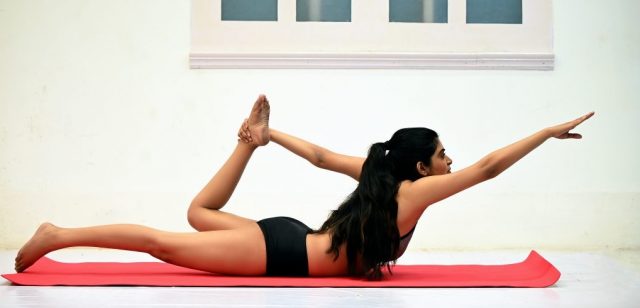Sciatica and lower back pain can occur when the sciatic nerve is irritated due to tension or swelling in the piriformis muscle. Both the sciatic nerve and the piriformis muscle are in the buttock area and in many people, the sciatic nerve can suffer pressure from the piriformis muscle.
Sciatica occurs in around 5-10% of the population, and it can affect your daily activities greatly. Sciatica can also affect the senior citizen community. Seniors can follow these tips as well as perform a daily senior exercise routine to help avoid sciatica. Whatever the severity, consulting your doctor about your sciatica is highly advised. In most cases, some exercises can help to alleviate the pain, as we already named some in our previous articles.
As a rule of thumb, whatever exercise you choose to do comes with the risk of damaging your nerve and/or muscle if you don’t approach it with caution. The trick is never to allow yourself to feel pain during the exercises. Ben Walker, fitness specialist at London Fitness, has trained many clients with sciatica. He said “whatever exercise you choose to do comes with the risk of damaging your nerve and/or muscle if you don’t approach it with caution. The trick is never to allow yourself to feel pain during the exercises”.
That means that you don’t have to go all the way through the exercise. Instead, stretch to the point where you don’t feel uncomfortable or in pain. If you feel pain, release the tension a bit and stay there.
7 exercises that can help to get rid of sciatica:
1. Knee-to-chest stretch
- Lie on your back with your knees bent upward at a 90-degree angle.
- Wrap both your hands around the knee of the affected leg and pull it gently toward your chest.
- Hold the stretch for 20-30 seconds.
- Switch legs.
2. Gluteal stretch
- Lie on your back and lift your affected leg resting the ankle on the opposite thigh.
- Grab the thigh (the one lying on the floor) with both hands and pull it gently toward you.
- Pull for 20-30 seconds; release and relax.
- Repeat 3 times.
- Switch legs.
3. Knee lifts
-
- Lying on your back lay your arms on the ground by your sides.
- Lift your legs until your heels are about 1 foot above the ground. (Keep your lower back glued to the ground)
- Lower your legs gently and repeat 5 times.
4. Hamstring stretches
-
- Sit on the floor with your back straight.
- Stretch your legs in front of you a hand’s width apart from one another.
- Inhale, and while exhaling, lean forward with your torso in a rotational manner starting from your hips.
- Your aim is to reach your toes with your hands while keeping your back straight at all times.
- Once you reach your feet (you don’t have to touch them), stay in the position for 20-30 seconds.
- Release and sit back up.
5. Back extensions
- Lie on the ground face down with the flat of your feet against the floor.
- Place your hands next to your head, shoulder-wide apart, with your fingers at about eye level and your forearms rested on the ground alongside your body.
- Arch your back by pushing down on your hands.
- Hold for 5-10 seconds and return to the initial position.
- Repeat 10 times.
6. Piriformis stretch
- Lie on your back and bring your heels toward your buttocks.
- Cross the affected leg over the other, and bend the knee of the upper leg toward your chest.
- Grab the knee and ankle of the affected leg with each hand and gently pull toward your chest.
- Hold for 30 seconds and release
7. Tennis ball massage
- Lie on your back and place a tennis ball (or a softball) under the affected area.
- If needed, adjust the position of the ball by making slight movements.
- Rest for 30-60 seconds.
Sources:
1. B. Koes, M. van Tulder and W. Peul, “Diagnosis and treatment of sciatica,”http://www.ncbi.nlm.nih.gov
2. NHS, “NHS Choices: Sciatica” http://www.nhs.uk/
3. NHS, “NHS Choices: Back pain”http://www.nhs.uk
4. R. Miller, “Sciatica Exercises for Sciatica Pain Relief” http://www.spine-health.com/

A professional writer with over a decade of incessant writing skills. Her topics of interest and expertise range from health, nutrition and psychology.


